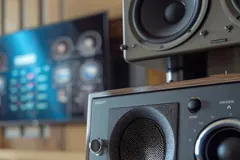![]() As a networked, professional audio product design company, Cardinal Peak is dedicated to helping brands bring their new audio products to market quickly. For networked, multichannel, bidirectional pro audio solutions, latency is a major concern. Real-time applications, such as conferencing, live performance and interactive gaming, require low latency and consistent jitter so the audio feels natural to listeners and doesn’t cause cognitive jamming.
As a networked, professional audio product design company, Cardinal Peak is dedicated to helping brands bring their new audio products to market quickly. For networked, multichannel, bidirectional pro audio solutions, latency is a major concern. Real-time applications, such as conferencing, live performance and interactive gaming, require low latency and consistent jitter so the audio feels natural to listeners and doesn’t cause cognitive jamming.
Low-Latency Wireless Audio Design
Achieving low latency in wireless systems is challenging since commercial wireless standards have significant and nondeterministic latency. From the table below, Bluetooth and 4G are not acceptable for low-latency audio designs. While there is potential for 5G and Wi-Fi, those systems introduce variable delays as networks become loaded. This variability is often a bigger problem than the absolute latency.
Typical Latency (ms) for Commercial Wireless Interface Standards
| Wireless Interface Standard | Typical Latency (ms) |
|---|---|
| Bluetooth | 200 |
| Bluetooth with Qualcomm AptX | 40 |
| 4G Cellular | 40-60 |
| 5G Cellular | 1-4 |
| IEEE 802.11ac Wi-Fi | 1-1.5 |
Software-Defined Radio Design Example
We had a customer that needed an extremely low-latency (submillisecond) link for both wired and wireless 10-channel bidirectional audio. For the wireless solution, we utilized our software-defined radio (SDR) audio expertise to develop a custom SDR with sub-ms latency using Analog Devices’ (ADI) Catalina transceiver. For the wired version, we used ADI’s A2B. The A2B wired and SDR wireless links were just one part of the overall networked audio system, which also leveraged Audinate’s Dante protocol for time synchronization as shown in the following figure.
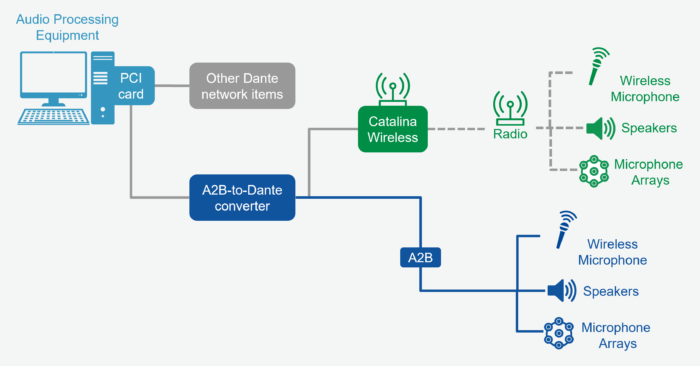
We elected to use ADI’s Catalina transceivers for a couple of reasons. First was the ready availability of an RF SOM with a sufficiently sized FPGA to implement the radio along with an embedded ARM core to run Linux (Zynq). Second was the frequency agility, as we needed both 2.4 GHz and 5.8 GHz to accommodate data since our requirement was to be able to run multiple Catalina-based systems simultaneously. This frequency agility precluded existing solutions from companies such as Lime.
The challenges included the following:
- Implementing the radio entirely in logic (FPGA) instead of software to meet latency requirements (see the following figure)
- Designing a custom waveform
- Could not use Wi-Fi or other commercial protocols because of latency issues
- As we had a custom waveform, we could not leverage all the commercially available test tools for commercial protocols
In our implementation, all the modem processing was done in the FPGA instead of the microprocessors to improve throughput and lower latency as shown in the following figure.
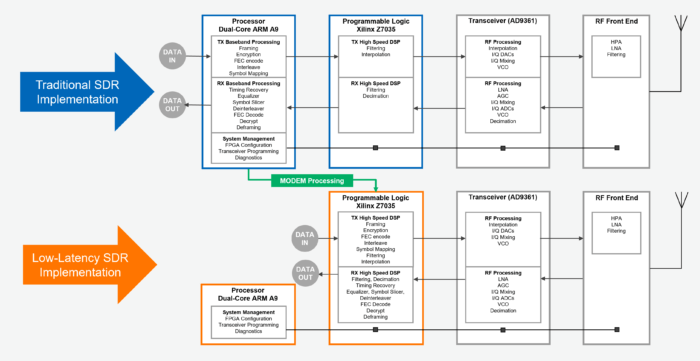
While this project was implemented using Catalina, we see how the newer Navassa parts, with their lower bandwidth and lower power, will be well suited for pro audio wireless microphones. The lower bandwidth means that no FPGA will be required, so the radio could be implemented using a low-cost, low-power microprocessor. These same qualities also mean that Navassa is well suited for land mobile radio applications. Given Navassa’s new chip-to-chip phase synchronization capability, we also see some great applications in phased array applications, such as satellite tracking and radar.
ADI & Professional Audio Design Experience
- The solution described above leveraged our experience with Audinate’s Dante.
- Being an ADI Alliance Design partner, we have deep experience with ADI’s audio products, including SHARC and A2B as well as the SDR components like Catalina and Navassa.
- For more information on our A2B experience, along with descriptions of those projects, please see our A2B case study.
About Cardinal Peak’s Product Design Services
Cardinal Peak accelerates your product development with end-to-end design services for connected audio devices. A leading product engineering firm, Cardinal Peak leverages deep experience in hardware, embedded software, cloud, mobile applications and quality assurance to develop connected IoT products in multiple markets, including audio, video, security and medical.
Product Ideation
Developing differentiated products that disrupt markets
IoT Engineering
Designing products that integrate with mobile applications and cloud systems
Voice
Experts at embedding voice processing capabilities in connected devices
Quality Assurance
From black box testing to test automation and manufacturing support
Managed Services
IoT fleet management, network management, and tier 2 support
Sustaining Engineering
Cost effective sustaining engineering to keep your IoT products current and operating as underlying services change
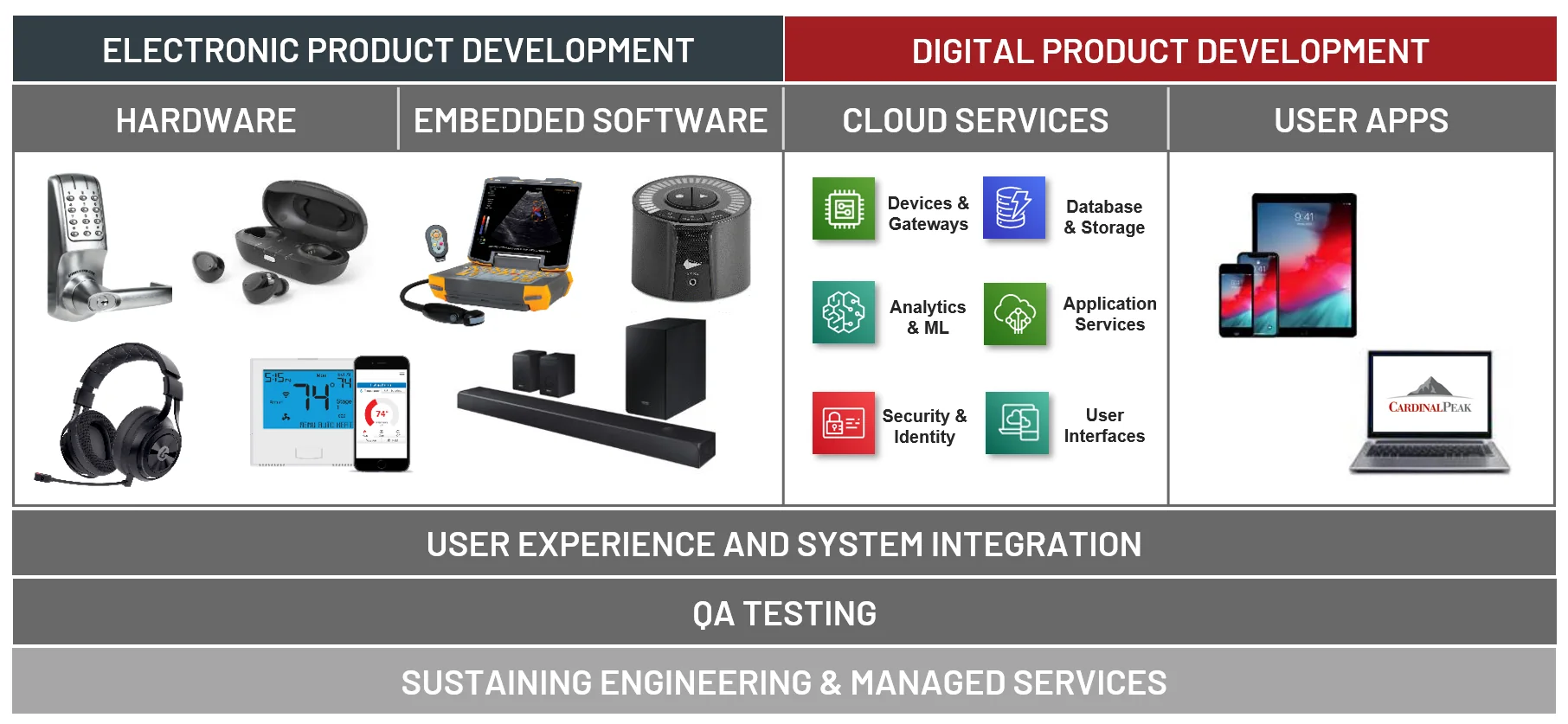
Audio Product Design Resources
Professional Networked Audio Design Related Articles
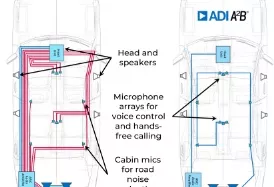
What is Analog Devices' Automotive Audio Bus (A2B) and How is it Used?
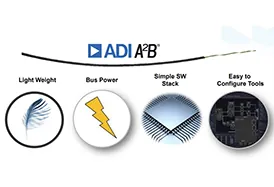
Unleashing A2B Technology for Conferencing, Live Audio and Other Applications
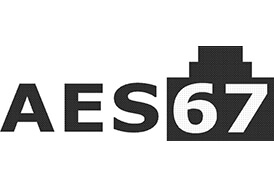
Introduction to AES67
AES67 is a standard for the transport of high-performance audio over IP networks. The AES67 standard is targeted to applications in professional audio: broadcast, production, live audio, and commercial and residential.
AES67 is a standard for the transport of high-performance audio over IP networks. The AES67 standard is targeted to applications in professional audio: broadcast, production, live audio, and commercial and residential.
FAQs About Low-Latency & Wireless Audio Design
What is the Difference Between Professional and Consumer Audio?
While fidelity can be a hallmark of professional audio, a common element in professional audio systems is the ability to manage many synchronous audio streams simultaneously, such as in virtually any live performance. The main difference between pro and consumer audio is not audio quality but instead the multichannel nature of professional audio applications. Consumer audio might be very high-quality audio, but consumer audio doesn’t involve managing tens to hundreds of synchronous audio channels over a network.
Why is Low Latency Challenging for Wireless Audio Systems?
Commercial wireless standards have been designed for playback of audio. As such, the protocols were not written to minimize latency. When designing wireless audio systems, it is often not possible to leverage existing tried-and-true commercial standards, so the effort is greatly increased. Additionally, many of these systems require multichannel audio, and that audio needs to be tightly synchronized.
What is the Difference Between Analog and Digital Wireless Audio?
For digital wireless audio, the audio signal must first be digitized before it is sent (like other digital data, with data checks and retries to fix any errors). Analog audio is the straight audio signal sent over RF like in AM or FM transmission with amplitude or frequency modulation. Digital audio provides all the same benefits that are common for digital systems, including collision recovery, error checking, encryption and more. Analog audio is still used in many places, as it is easier to minimize the latency because there is no digitization step, error checking or other data processing techniques that improve quality but require time to process.

